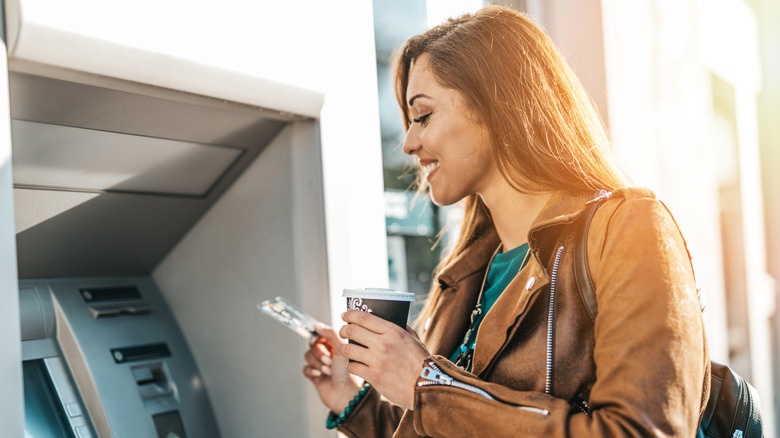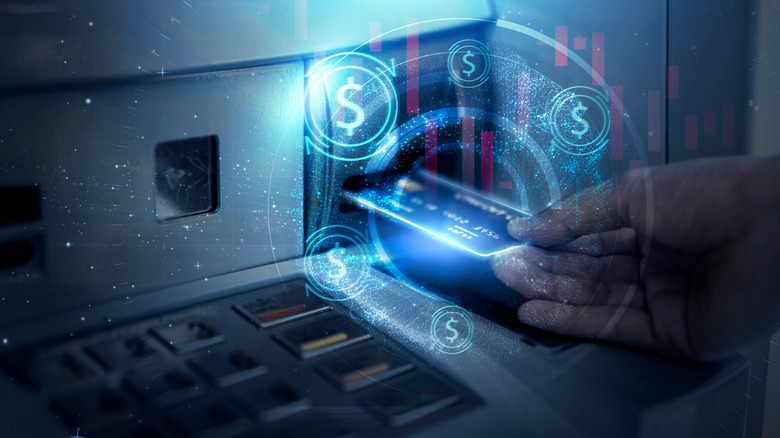The Truth About The Invention Of The First ATM
The first Automated Teller Machine (ATM) debuted at the Barclays in Enfield, London, England, on June 27, 1967. The U.S. followed suit just two years later, in 1969, on September 2, with its Chemical Bank ATM, located at the Rockville Center in New York (via History).
The first ATM was dependent on a ticket-punching system, including a radioactive isotope carbon 14 (via TIME). John Shepherd-Barron claims to have come up with the idea of the ATM, but also alleges to have created the notion of having to input a personal identification number (PIN) to access one's funds as well.
Both facts come equipped with scrutiny, however, because he failed to patent it. He claimed he never did so because he didn't want criminals to have access to how the system worked, while James Goodfellow, who was credited with patenting the first automated cash machines, also asserts to have created them, including with a PIN (via BBC News).
Shepherd-Brown's machine was established a month before Goodfellow's creation, hence why he garners all the recognition, despite Goodfellow's patent. The difference between the two men's creations is simple. Shepherd-Brown's creation used the ticket-punch system, via the radioactive isotope carbon 14 method, whereas Goodfellow developed the magnetic-strip cards and PIN system we still use today.
On the 50th birthday of the first ATM, in 2017, Shepherd-Brown's machine was commemorated with a gold plaque and a red carpet for customers (via Reuters).
Shepherd-Barron and Goodfellow paved the way for the ATM's evolution
Despite who is responsible for the creation of the ATM, both Shepherd-Barron and Goodfellow would be quite proud to see what their minds paved the way for in regards to money distribution.
We have come a long way in easily accessing funds from machines. Can you believe there was a time when there were no drive-through ATMs? In fact, those didn't arrive until over a decade later, with the first being erected in Baton Rouge, Louisiana, in 1980 (via American Banker).
Next were the talking and video-capable ATMs. The first chatty box was established in San Francisco, California, in 1999, at the city hall, but have since become quite common. The first hybrid screen ATM followed shortly thereafter, now allowing for face-to-face engagement with a banker as well.
Much to Goodfellow's dismay, ATMs have since spawned into cardless withdrawal boxes, where customers can use their respective smartphones to receive a unique, one-time code to access their accounts as more and more locations begin to follow suit. Cash-exchange apps, like Venmo, have seemingly rendered Shepherd-Barron's modern-day ATM unnecessary, simply because it allows for the easy exchange of money, right from where you already are.
We will see where the future takes us, but keep in mind, there are already Bitcoin-specific ATMs now as well, where customers can convert their digital coins to cash and vice-versa.

